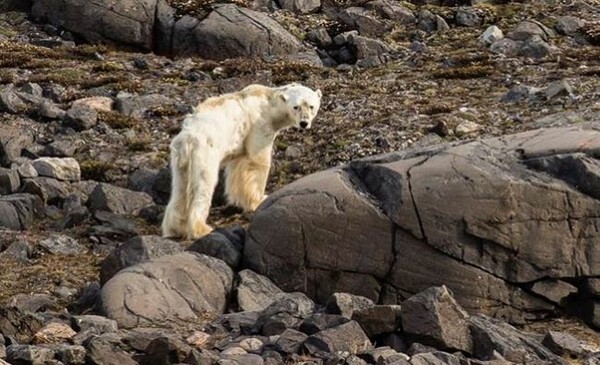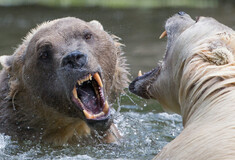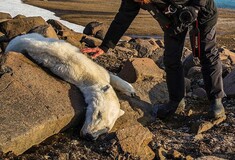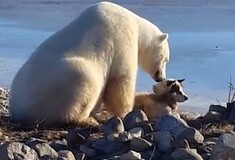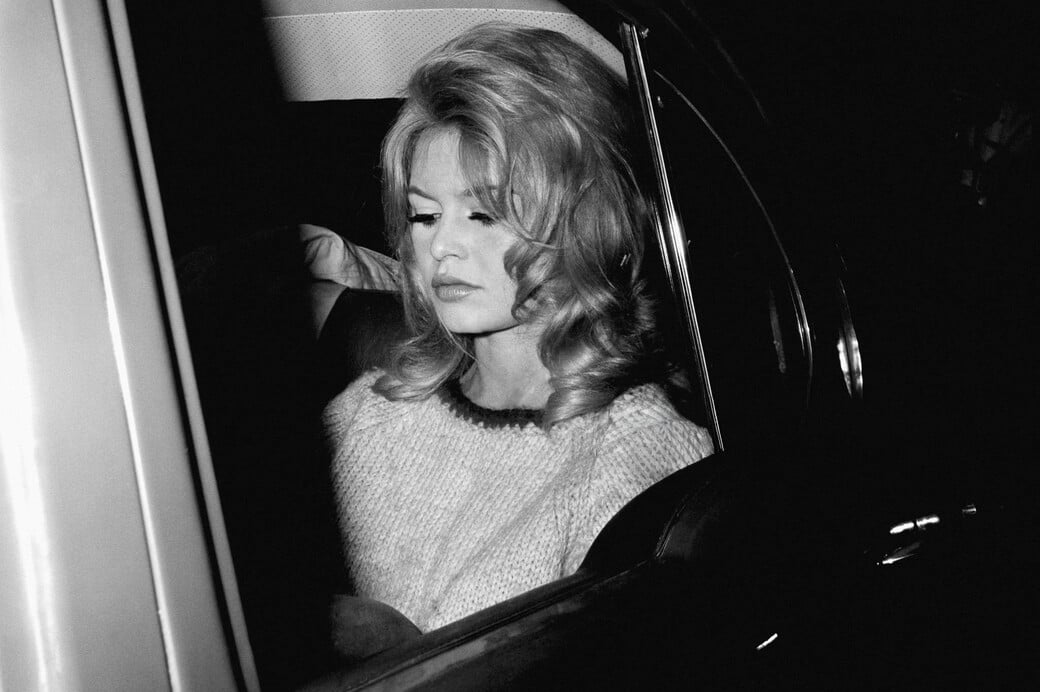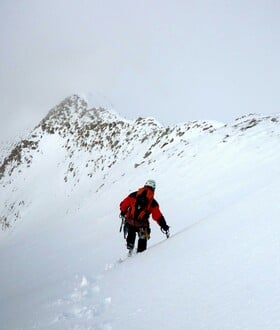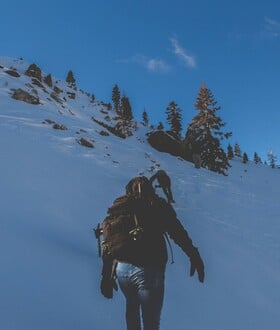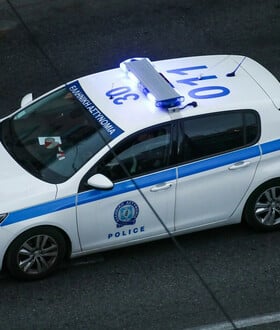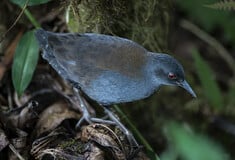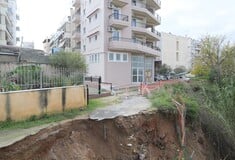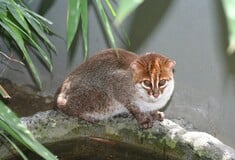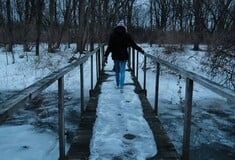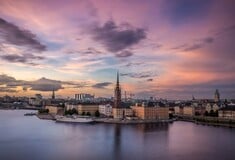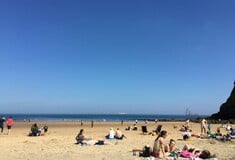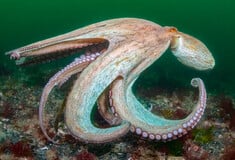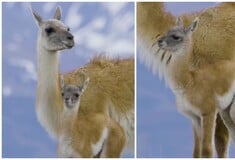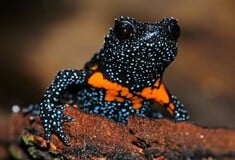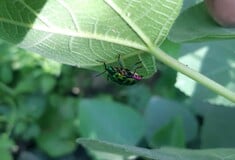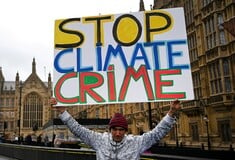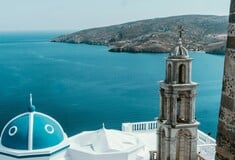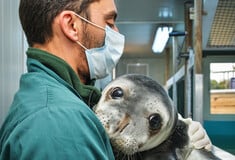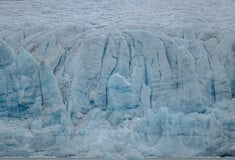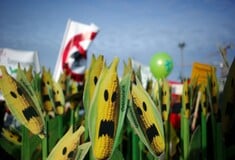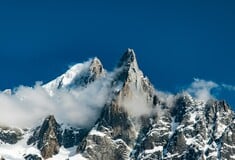Πάνε σχεδόν δύο χρόνια από τότε που η φωτογραφία μιας αρκούδας που ήταν στα όρια της λιμοκτονίας δημοσιεύτηκε στο National Geographic και σήμανε για πρώτη φορά συναγερμό για το πώς τα μεγαλοπρεπή αυτά ζώα δυσκολεύονται πλέον να τραφούν.
Η συζήτηση μεταξύ των επιστημόνων άνοιξε και επικεντρώθηκε στο πώς η έλλειψη πάγου δυσχεραίνει πια το κυνήγι για τις πολικές αρκούδες καθώς χωρίς τα παγωμένα στρώματα που επιπλέουν στο νερό αδυνατούν να φτάσουν τη λεία τους.
Σήμερα ο φωτογράφος του National Geographic Paul Nicklen έδωσε στη δημοσιότητα μια ακόμη συγκλονιστική φωτογραφία την οποία συνοδεύει με την προσωπική του μαρτυρία θέλοντας να ευαισθητοποιήσει τον κόσμο για την προστασία του πλανήτη.
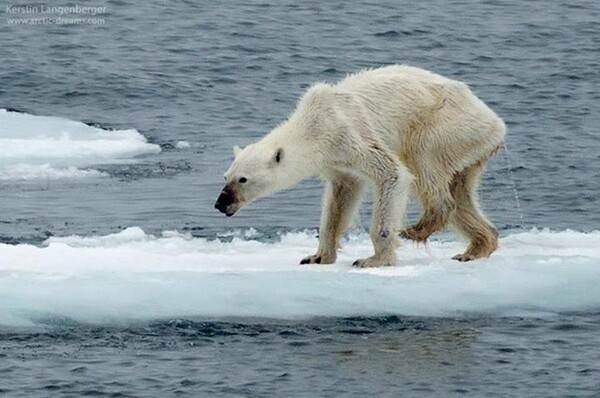
«Δεν θέλαμε να πλησιάσουμε πολύ κοντά του. Δεν θέλαμε να χρησιμοποιήσει την τελευταία του σταγόνα ενέργειας προσπαθώντας να μας αποφύγει. Του πήρε πολλή ώρα και πολλή προσπάθεια για μπορέσει να σταθεί όρθιος μόνο για να καταρρεύσει ξανά. Τον αφήσαμε. Ήταν μία από τις πιο σκληρές αποφάσεις που έχω πάρει εδώ και πολύ καιρό. Θέλω οι φωτογραφίες να διηγηθούν την ιστορία του. Θέλω να μπορέσω να πω την ιστορία του είδους του. Ήταν κάποτε μια τεράστια αρσενική πολική αρκούδα και τώρα είναι ένα μάτσο κόκαλα, έχοντας συρρικνωθεί με το δέρμα του να κρέμεται χαλαρό γύρω από τον κάποτε μεγαλοπρεπή σκελετό του. Σύντομα θα πεθάνει και θέλω να αναπαυθεί έχοντας ζήσει σαν υπέροχη αρκούδα. Δεν μπορούμε να αποδείξουμε πως είναι σε αυτήν την κατάσταση ελλείψει θαλάσσιου πάγου αλλά δεν είναι μια ματιά στο μέλλον καθώς ο όγκος πάγου καταγράφει το χαμηλότερο επίπεδο στην ιστορία; Ακούω πολλές προτάσεις από κόσμο που λένε, "Ας πάρουμε τις πολικές αρκούδες στη Ανταρκτική οπότε να μπορούν να τρώνε πιγκουίνους" ή "Ας βάλουμε πλατφόρμες από φελιζόλ ώστε να μπορούν να είναι στον ωκεανό". Αυτές οι προτάσεις είναι παράλογες αλλά σημαίνουν πως ο κόσμος νοιάζεται. Ο μόνος τρόπος για να σωθούν οι πολικές αρκούδες είναι μειώνοντας το αποτύπωμα άνθρακα παγκοσμίως και βρίσκοντας ανανεώσιμες πηγές ενέργειας».


